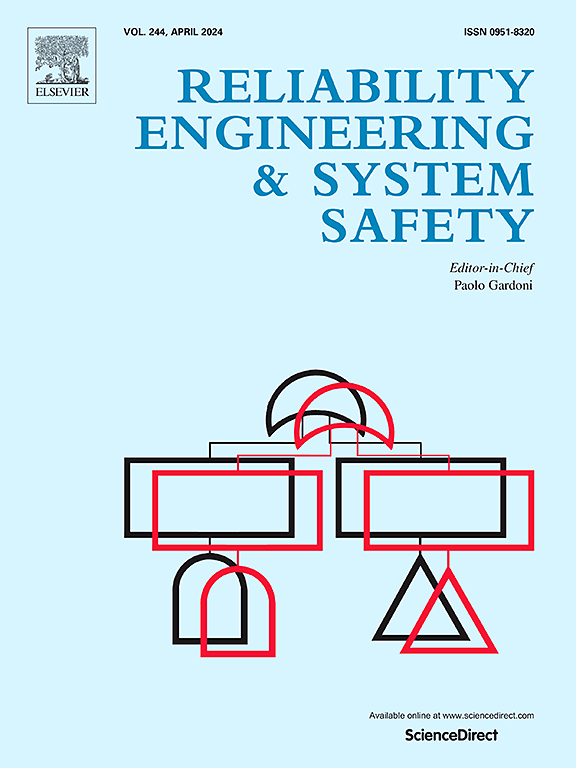基于物理信息的神经网络检测轴向柱塞泵摩擦副磨损
IF 9.4
1区 工程技术
Q1 ENGINEERING, INDUSTRIAL
引用次数: 0
摘要
摩擦副磨损是轴向柱塞泵最常见的失效机理之一,其准确检测是保证液压系统安全可靠运行的关键。现有的轴向柱塞泵摩擦副磨损检测研究主要集中在数据驱动的故障诊断模型上,但这些黑匣子数据驱动模型存在可解释性差和物理不一致性等问题。为了克服这一局限性,本文提出了一种基于物理信息神经网络的轴向柱塞泵摩擦副可解释磨损检测方法。首先,建立了流量压力时间导数的常微分方程(ODE),将瞬时流量压力与代表轴向柱塞泵磨损状态的摩擦副液膜厚度联系起来。其次,基于观测到的排气压力信号,通过反求解ODE,建立了一种基于物理信息的神经网络和多参数动态识别方法,以识别每个摩擦副的液膜厚度。最后,提出了一种基于泵的容积效率和液膜厚度效应大小的可解释磨损检测方法。实验结果表明,摩擦副中液膜厚度的识别结果具有良好的物理一致性,该方法可以定位磨损的摩擦副,具有较高的模型可解释性。本文章由计算机程序翻译,如有差异,请以英文原文为准。
Physics informed neural networks for detecting the wear of friction pairs in axial piston pumps
The wear of friction pairs is one of the most common failure mechanisms for axial piston pumps and its accurate detection is essential for ensuring safety and reliability of hydraulic systems. The existing studies on the wear detection of friction pairs in axial piston pumps is focused on data-driven fault diagnosis models, but these black-box data-driven models are limited by poor interpretability and physical inconsistency. To overcome this limitation, this paper proposes an interpretable wear detection method for the friction pairs of axial piston pumps based on physics informed neural networks. First, we establish an ordinary differential equation (ODE) for the time derivative of discharge pressure to relate the instantaneous discharge pressure with the fluid film thicknesses in friction pairs that represent the wear condition of axial piston pumps. Second, we develop a physics informed neural network and a multi-parameter dynamic identification method to identify the fluid film thickness in each friction pair by inversely solving the ODE based on observed discharge pressure signals. Finally, we propose an interpretable wear detection method based on the pump's volumetric efficiency and effect size of fluid film thickness. Experimental results suggest that the identification results of fluid film thickness in the friction pairs have a good physical consistency, and the proposed method can locate the worn friction pair with a high model interpretability.
求助全文
通过发布文献求助,成功后即可免费获取论文全文。
去求助
来源期刊

Reliability Engineering & System Safety
管理科学-工程:工业
CiteScore
15.20
自引率
39.50%
发文量
621
审稿时长
67 days
期刊介绍:
Elsevier publishes Reliability Engineering & System Safety in association with the European Safety and Reliability Association and the Safety Engineering and Risk Analysis Division. The international journal is devoted to developing and applying methods to enhance the safety and reliability of complex technological systems, like nuclear power plants, chemical plants, hazardous waste facilities, space systems, offshore and maritime systems, transportation systems, constructed infrastructure, and manufacturing plants. The journal normally publishes only articles that involve the analysis of substantive problems related to the reliability of complex systems or present techniques and/or theoretical results that have a discernable relationship to the solution of such problems. An important aim is to balance academic material and practical applications.
 求助内容:
求助内容: 应助结果提醒方式:
应助结果提醒方式:


